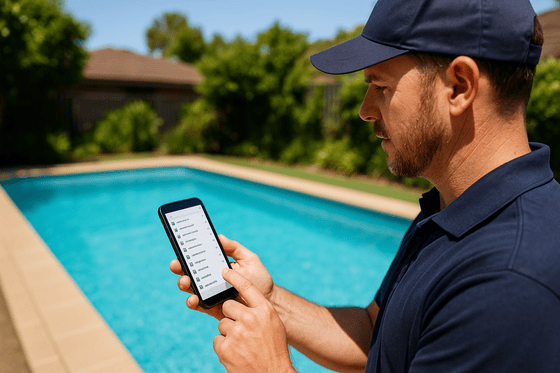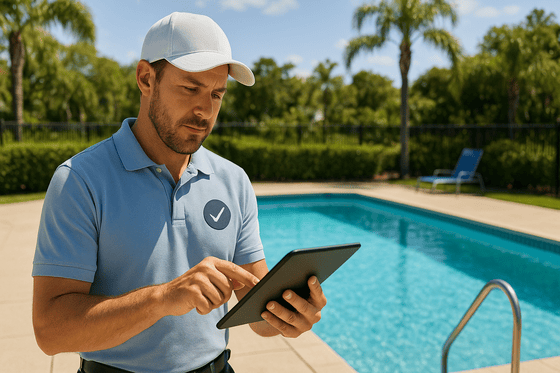The Critical Importance of Pool Safety
Discover key pool safety tips and best practices in our expert guide. Stay informed!
Diving into the Depths of Pool Safety Awareness
Welcome to our exploration of pool safety, a topic of paramount importance for communities worldwide. In this blog, we delve into the essential aspects of ensuring safety around pools and spas. Pools, a common feature in homes and communities across various countries, bring joy and relaxation but also come with inherent risks.
Our focus will be on highlighting key safety statistics, shedding light on the diverse approaches to pool safety regulations, and emphasizing the critical role of education in preventing accidents.
Join us in this informative journey as we underscore the importance of vigilance and responsibility in maintaining safe aquatic environments for all.

The Reality of Pool Safety: Statistics and Facts
Unveiling the Numbers: A Global Perspective on Pool Safety
When it comes to pool safety, the statistics are both enlightening and sobering. Globally, drowning remains a significant cause of accidental death, particularly among young children.
In the United States, the CDC reports that drowning is the second leading cause of unintentional injury death in children aged 1-14 years.
In Australia, Royal Life Saving Society data shows that 27% of drowning deaths occur in swimming pools.
The UK is not immune either, with the Royal Society for the Prevention of Accidents noting that most drownings of children under five happen in domestic pools.
These numbers bring to light a critical global issue: the imperative of safeguarding pools and spas. This challenge transcends borders, emphasizing the necessity for robust safety protocols and preventive measures to protect individuals, especially children, from the dangers associated with swimming pools and spas.
Pool Safety Laws and Regulations Around the World
When it comes to pool safety, laws and regulations vary significantly across different countries, reflecting diverse cultural and environmental considerations.
In Australia, for instance, stringent pool fencing laws are in place, requiring barriers around all pools and spas to prevent unsupervised access by young children. These regulations are enforced with regular inspections and penalties for non-compliance.
In the United States, pool safety laws can vary from state to state. However, the Virginia Graeme Baker Pool and Spa Safety Act, a federal law, mandates anti-entrapment drain covers and other safety devices in public pools. For private pools, guidelines often focus on barriers, alarms, and safety covers. The United Kingdom, while not as warm as Australia or parts of the USA, still takes pool safety seriously, especially for public pools. The Health and Safety Executive (HSE) outlines guidelines for pool operators, focusing on risk assessment and management to prevent drowning and other accidents.
These variations in laws and regulations underscore the importance of being informed and compliant, regardless of where you are. For pool owners, understanding local requirements is crucial to ensure not only legal compliance but also the safety of all pool users.
Regardless of location, several universal safety measures are widely advocated. These include:
- Secure Fencing: A physical barrier that completely surrounds the pool, preventing unsupervised access, particularly by children.
- Alarms and Sensors: Devices that alert when someone enters the pool area, offering an additional layer of safety.
- Rescue Equipment and First Aid: Readily available life-saving tools and first-aid kits for emergencies.
- Regular Maintenance: Ensuring the pool and its surroundings are in good condition, reducing the risk of accidents.
- Education and Supervision: Educating pool users about safety and the importance of constant supervision, especially for children.
By adopting these measures, pool owners and users can significantly reduce the risks associated with swimming pools and spas, making them safer for everyone.
Child Safety Around Pools
Ensuring the safety of young children around pools is paramount. The key lies in constant vigilance and education. Always have an adult actively supervising when children are near or in the pool. This means undistracted, continuous observation, ready to react in case of an emergency.
Teaching children basic water safety skills is also crucial. This includes swimming lessons and educating them about the dangers of water, without instilling fear. Make them aware of the rules, like not running around the pool area and never swimming alone.

Another critical aspect is being prepared for emergencies. Knowledge of CPR and basic first aid can be lifesaving in the event of an accident. It's also advisable to have a clear, accessible emergency plan, including contact information for emergency services and a list of steps to follow in case of an incident.
By combining supervision, education, and preparedness, parents and guardians can significantly reduce the risks associated with pools and ensure a safer environment for children.
Regular Pool Maintenance and Inspection
Regular maintenance and professional inspections are crucial for maintaining pool safety. A well-maintained pool not only ensures a pleasant swimming experience but also reduces risks associated with poor water quality and malfunctioning equipment.
It's recommended to have a professional pool inspection at least once a year. This inspection should include checking the integrity of pool barriers, gates, and latches, as well as ensuring the water's chemical balance and filtration system are functioning correctly.
For routine maintenance, a weekly schedule is advisable. This includes checking pH levels, cleaning filters, and inspecting safety equipment. Seasonal tasks, such as winterizing the pool or preparing it for summer use, are also important for long-term safety and functionality.
By adhering to a regular maintenance and inspection schedule, pool owners can ensure their pools remain safe and enjoyable for everyone.
Essential Pool Safety Checklist: Your Guide to a Secure Swimming Environment
Maintaining a safe pool environment is a critical aspect of responsible pool ownership. It involves consistent vigilance and a commitment to safety protocols. To support pool owners in this endeavour, we've compiled an essential checklist that covers key safety aspects:
- Barrier Compliance: Regularly inspect pool barriers and gates to ensure they meet local safety standards.
- Locks and Latches: Check and maintain all locks and latches on gates to prevent unauthorized access.
- Hazard-Free Zone: Keep the pool area clear of toys, tools, and other potential hazards to avoid accidents.
- Visibility: Maintain clear visibility around the pool perimeter for easy supervision.
- Water Quality: Conduct routine checks to ensure water quality and hygiene.
- Safety Equipment: Have life-saving equipment like lifebuoys and first aid kits readily available.
- Education: Educate all pool users, especially children, on basic water safety rules.
- Supervision: Always supervise children and non-swimmers when they are in or around the pool.
- Emergency Preparedness: Learn CPR and basic emergency response techniques.
- Professional Inspections: Schedule annual inspections by a certified pool safety inspector.
Remember, this checklist is a starting point for maintaining a safe pool environment. When in doubt or for specific concerns, always consult local authorities and speak to your local qualified pool inspector for tailored advice and inspections. Their expertise can provide peace of mind and ensure your pool meets all necessary safety standards.
Prioritizing Pool Safety for Everyone
As we conclude, it's clear that pool safety is a multifaceted responsibility, crucial for the well-being of every pool user. From adhering to local regulations to ensuring regular maintenance and educating young swimmers, each step plays a vital role in preventing accidents and enhancing the overall pool experience.

For pool inspectors, staying abreast of the latest safety standards and inspection techniques is key to offering top-notch services. Embracing modern tools like the Pool Inspector App can significantly streamline your operations, offering features like digital reporting, efficient scheduling, and comprehensive client data management. This not only elevates the quality of your services but also positions you as a forward-thinking, reliable professional in the pool safety industry.
To learn more about how the Pool Inspector App can revolutionize your business and contribute to a safer swimming environment, click here. Let's work together to ensure a secure and enjoyable swimming experience for all.






